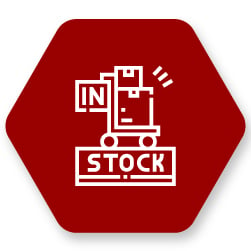The retail industry is a dynamic and constantly changing entity. Due to continuous changes in consumer demand, you can expect your sales to fluctuate. You can also expect to suffer from dead stock if you don't pay attention to the products on your shelves. If you find yourself struggling with this issue, it’s not one you can leave and hope it goes away.
After all, dead stock can affect your cash flow, take up valuable space and reduce your earnings. You thus need to be fully aware of the primary causes of dead stock and how to fix the issues.
About the contributors
Esma Janse van Rensburg joined DotActiv in 2019 as a space planner. She worked on a previous account before joining the Food Lover’s Market team in 2020. She has a Bsc Consumer Science from the North-West University.
Kelly Cordeiro joined DotActiv in 2017. Since joining, she has had experience running many accounts, including Cerebos, Danone, Premier FMCG, and Shield Chemicals and Pick n Pay.
Leané Mulder joined DotActiv in 2019 as a space planner, working on various ad-hoc accounts. Since then, she has been promoted to account manager. Today, she oversees work on our Motus account. She has a BSc in Consumer Science from North-West University.
Nadia Cloete joined DotActiv in 2017 as a shelf planner, creating data-driven planograms for Makro's General Merchandise account. She has a Bachelor of Arts in Commercial Fashion from STADIO's School of Fashion, formerly known as LISOF.

What is dead stock?
Within the retail industry, slow-moving stock and dead stock have both been a constant issue.
In this context, slow-moving stock is inventory that has not moved in the last 6 to 12 months. Meanwhile, dead stock is inventory that has not moved in more than a year. You can also refer to it as obsolete inventory.
Why refer to slow-moving stock when this is about dead stock? Simple.
Slow-moving stock is the precursor to dead stock. And, if you do not immediately address it, it will most likely end up as dead stock. When that happens, your stock becomes an obstacle and difficult to remove from your business, write Sugiono and Alimbudiono.
There have been previous studies that highlight the primary reasons for slow-moving and dead stock. A few include ordering inconsistencies, defective stock, low or minimal demand for goods, excessive stock, seasonal products, errors in design resulting in unsold goods and a lack of follow up procedures for stock with low turnover.
Of course, those are not the only reasons.
Others include having a distribution centre (DC) that orders and holds stock without communicating the need or desire with stores. In this case, a store won't order the items from the DC since their customers have no desire to buy the product. The result is that you'll have a DC full of dead stock.
Another reason is where you might not do proper market research. This is where your customers might want an item but only a specific type of version.
Let's say, for example, you stock motor parts and accessory products. Your customers desire seat covers. But what seat covers do they want? It's no use stocking seat covers for an SUV when your customers want covers for hatchbacks. You'll end up with wasted shelf space and a loss of sales. Beyond that, you'll also see your DC losing sales as they return any stock that they already have packed away.
Another critical factor to take into account is your trend-related products. You need to monitor any trends closely to ensure you have sufficient stock for the expected demand. However, you must not have so much that when the trend passes, you struggle to sell what is on your shelves. It’s a delicate balance, and any poor planning on your part can, quite easily, result in dead stock.
Slow-moving and dead stock also affects both the newness and obsolescence of products as well as your carrying cost. Thus, it’s critical that you not only anticipate potential dead stock but also plan for it. Then, when it does occur, you’ve handled it cautiously and mitigated any potential negative impact.

What are the negative impacts of dead stock on your business?
What is the cost of holding onto dead stock? Not only does it have a clear financial impact, but it has a practical impact too. We touch on both below.
1. What are the financial implications of dead stock?
When it comes to the negative impact of dead stock, the obvious one is financial. It can result in monetary loss, not only through the lack of sales but also a drop in profits. Also, there is the continued cost of ordering and keeping these items in your store or DC.
That ultimately leads to a drop in investment made into your business. You invest capital into purchasing products for the purpose of generating profits and ROI. However, if you find your capital tied up in dead stock, your investments are working against you. You also won't be able to reinvest your capital, points out Eric Jensen of Cutwater Solutions.
Storage costs are another major factor that will negatively impact your business because of dead stock. Besides the normal costs involved such as rent, property tax, maintenance and amenities, you also need to contend with slow-moving and dead stock taking up space. That reduces any available space for new and fast-moving lines.
That also means you’ll need to rent out extra space or relocate to a large space. Meanwhile, hiking up operating costs will lead to an overall price increase and a decrease in profits.
Then there is the point that it can lead to an increase in employee wages due to increased work time. It's from increased restocking, more handling involved and more maintenance.
2.What are the practical implications of dead stock?
The most prevalent practical implication is that you’re using valuable space on items that you can not or will not sell. The problem is that removing these items from your shelves doesn’t necessarily negate the issue. After all, if you take your stock off the shelf, it needs to go somewhere else.
Having wasted space on your shelf has further negative effects that are not only monetary. By reducing the space given to fast-moving items, you need to restock them more often, thereby increasing the work of your staff and reducing overall productivity. With this constant need to replenish your stock, your customers will become frustrated since your shelves are never fully stocked. That negatively impacts any shopping experience.
The knock-on effect is that you’ll likely need to work longer hours and pay overtime to your employees who need to fix the errors.

How to minimise the negative effects of dead stock in your business
Dead stock is the type of problem that you will likely find yourself combatting throughout your store's life. Even though you may not completely eradicate it though, you can, at least, keep it to a minimum. There are various tactics on how to get rid of existing dead stock, and then more important tactics on how to reduce the occurrence of dead stock.
1. Tactics to get rid of dead stock
Below are a few tactics you can use to get rid of dead stock that already exists in your store.
Bundling
Bundle dead stock items with fast-moving items and sell at a discount. This will result in dead stock moving out of your store at a faster pace at high volumes. Profit margins may appear to be reduced. But rather sell-off these items at any value than having to write them off completely, and no longer having extra employees and handling costs.
In-store incentives/gifts
A way to clear out dead stock is by utilising it as giveaways, gifts with a purchase or incentives. Such as getting a gift after spending a specific amount. Everyone likes getting free things, which will encourage consumers to purchase more to make up this amount so as to qualify.
Discounts
One of the easiest ways to get rid of dead stock with minimal effort is to sell the items at a discount, to incentivise consumers to purchase these items.
Returns
This is fairly simple. You can reach out to your suppliers or wholesaler and request if the excess stock can be returned with a full refund or a discounted price so as to minimise loss. They may also offer you credit for these items if you order from them often.
Two important things to remember is that restocking and handling fees may be applicable and any other freight fees that have been incurred will not be refunded. It is best to try and minimise the loss as much as possible so do this as quickly as possible to increase your chances of this being a viable option.
Donations
Finally, you could also look to donate dead stock items to charities. This will not only open up valuable space but also comes with a tax right off, reducing the overall loss on these items. It’s critical to know if you can legally donate any of these items. For example, you would be allowed to donate expired items.
2. Tactics to minimise dead stock
Below we will discuss tactics on how to prevent dead stock from occurring and how to minimise its effects.
Invest in software and services
Dead stock isn't just an inventory issue. It's the result of the overall mismanagement of a category. Therefore, by centralising and properly monitoring all aspects of your category, you can reduce this issue.
DotActiv offers services that can help you. With access to your raw sales data, DotActiv can complete ranging and assortment planning.
For ranging, we can range your full sales data or only that of a specific department or category. Ranging entails an in-depth analysis of the data where we’d apply the Pareto principle. With this principle, DotActiv looks at 20% of your SKUs that provide 80% of sales. Through these, you can make decisions about which SKUs to derange before they become dead stock.
For assortment planning, while similar to ranging, it is also more precise and detailed. Assortment planning involves creating a full range then completing further analysis on each specific department for each market. That means that the best possible range is known for each store and category so that you can hold only those products that will sell.
Complete market research
Another action to take is to complete intensive market research. That is so you can get an accurate picture of what it is that your customers want and need.
Before making large investments into new products, ensure that the consumers in the market will purchase these items. You need to complete such research continuously and not only when you add a new product line. You need to complete market research after too. Doing that ensures that the product is up to standard and meets the needs of your customers.
Conclusion
So, if one or all of the above tactics are followed, will dead stock be removed completely? As long as your business is open for trade, dead stock will always be an issue. However, the above solutions will provide checks and loopholes to keep it in control.
Do you need help managing your stock in store? You can book a complimentary custom exploratory consultation with us here or visit our online store.


